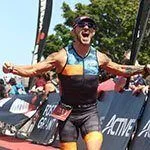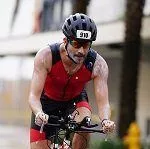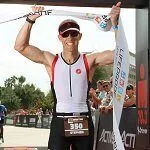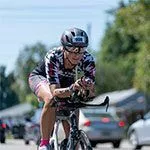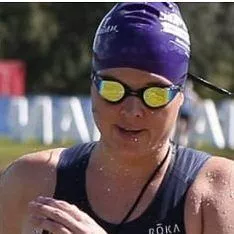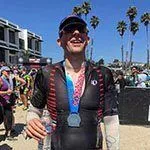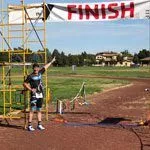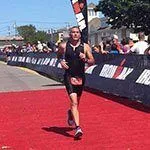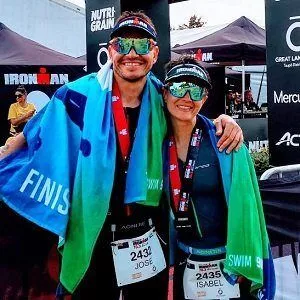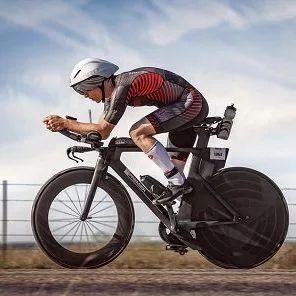The 80/20 Nutrition Guide
by Matt Fitzgerald
The 80/20 method of endurance training is based on the simple idea that the best way for any endurance athlete to train is the way the best endurance athletes train. Research by Stephen Seiler and others has shown that elite competitors in every endurance discipline from running to rowing consistently spend about 80 percent of their total training time at low intensity. Additionally, prospective studies have demonstrated that recreational athletes improve more when they emulate this approach than they do when they spend more time at higher intensities.
We believe that athletes should bring the same principle to bear in shaping their dietary habits and fueling practices, copying what the majority of pros do with both their everyday nutrition (breakfast, lunch, and dinner) and their performance nutrition (fueling in workouts and races).
Everyday Nutrition
Underneath superficial, largely cultural differences in food choices, world-class endurance athletes around the world eat pretty much the same way. Following are six implicit “rules” that are practiced almost universally by the highest-achieving endurance athletes and that we suggest you implement in your own life. To learn more about the eating habits of top endurance athletes, check out Matt Fitzgerald’s book The Endurance Diet.
Eat everything
Most popular diets, including the Paleo Diet and plant-based diets, forbid or strictly limit consumption of particular food types. Very few world-class endurance athletes adopt such restrictions, choosing instead to include all of the major food types in their diet and often going out of their way to check every box daily (for example by combining lots of different foods in a bowl, wrap, or blended drink). The advantage of eating “everything” is that each food type contributes to health and performance in a different way. Although it is possible to achieve optimal health and performance on a restrictive diet, it’s harder and riskier, like fighting with one arm tied behind your back.
Eat naturally. When we say that elite athletes eat (and drink) everything, we mean everything, including sweets, fried foods, and alcohol. They do so because, like the rest of us, they find such foods and drinks are enjoyable, and also because they aren’t uptight about their eating. People who try to eat “perfectly” tend to be plagued with feelings of stress and guilt surrounding food, and ironically they also tend not to eat as healthily as those who maintain slightly more relaxed standards because dietetic perfection by any definition is unsustainable.
This does not mean that elite endurance athletes practice an “anything goes” approach to diet, however. Whereas they do eat everything, the pros get the vast majority of their daily calories from natural, unprocessed foods of the following types: vegetables; fruit; nuts, seeds, and healthy oils; whole grains; whole, unsweetened dairy; and unprocessed meat and seafood. You should do the same. Coach Matt’s DQS for Diet Quality Score) is an easy-to-use tool that will allow you to assess the overall quality (i.e., naturalness) of your diet, raise it to elite standards, and monitor it to ensure it stays there.
Eat enough
Elite endurance athletes do not consciously restrict the amount of food they eat by enforcing strict calorie counts or portion-size limits or by eating less than is needed to satisfy their hunger, as many recreational athletes and dieters do. Nor do they mindlessly overeat as a majority of people in affluent societies do today. Instead, they pay mindful attention to internal signals of hunger and satiety and allow these signals to determine when and how much they eat. This is the only reliable way to eat sufficiently but not excessively—that is, to eat enough to meet the energy demands of heavy training but not so much as to gain or hold onto excess body fat.
The popular notion that one’s appetite can’t be trusted is a myth. You just have to listen to it! All animals in the wild rely on their built-in appetite regulatory mechanisms to eat the right amount of food and human infants do it too—until they are socialized to habitually ignore their internal signals of hunger and satiety and overeat. But these signals are far more reliable as indicators of true calorie needs than calorie calculators. Again, it’s a matter of not tuning them out.
Don’t micromanage
It’s not only calories that elite endurance athletes don’t count. They also don’t bother to count carbohydrate grams, protein percentages, or anything else in their diet. Instead of micromanaging their nutrition, fussing over the details, they keep their attention focused on broader patterns such as eating on a regular schedule and balancing food types. The success of these athletes is proof positive that nutritional micromanagement is not necessary. In fact, fussing over the details of your diet can even be counterproductive, a symptom of a neurotic relationship with food that infuses unhealthy stress into eating and often leads to erratic eating behaviors. It’s important to understand that, no matter what you eat, you will be healthier and fitter if you are happy with what you eat.
Eat your way
Many popular diets are one-size-fits-all. They require every follower of the diet to eat the same way despite their culture, preferences, and metabolic individuality. By contrast, elite endurance athletes customize their diet to fit their lifestyle, tastes, and needs. In seeking to improve your diet, you should not feel obligated to start from scratch. Instead, think in terms of evolving your existing diet. If you’re Italian and you love pasta, don’t stop eating it, but do substitute whole-grain pasta for the regular stuff (except on special occasions). If you’re one of those people who claims to hate all vegetables, don’t force yourself to eat brussels sprouts, but do make a short list of vegetables you actually enjoy and start with those. If wheat and certain other grains don’t agree with you, don’t make the mistake of assuming that carbs in general don’t agree with you and go on a self-sabotaging low-carb diet, but do get most of your grains from alternatives like starchy vegetables and fruit.
Supplement selectively (if at all)
A tremendous variety of purportedly performance-enhancing nutritional supplements are marketed to endurance athletes—everything from resveratrol (an antioxidant found in red wine) to coenzyme Q10 (a natural cellular compound involved in aerobic metabolism). Interestingly, very few elite endurance athletes use any of these products, and the reason is simply that they don’t actually work.
The supplements that elite endurance athletes do take, by and large, are not for performance enhancement but for basic health support. A select few nutritional supplements are conditionally necessary to address deficiencies that are common in endurance athletes and difficult to correct through diet alone. Specifically, we’re talking about iron, omega-3 fats, and vitamin D. We recommend that you have your physician check your iron and vitamin D levels regularly to determine whether supplementation is necessary for you, and unless you consume omega-3-rich fish at least twice a week, we encourage daily omega-3 supplementation as well. Just about any other supplement you might take in addition to these is a waste of money, assuming your diet is as it should be.
Performance Nutrition
Few topics in sports science have been as heavily researched as the effects of various fueling practices on endurance performance. By this point, scientists have pretty well figured out what works best, although you wouldn’t necessarily know it from some of the alternative methods you see peddled by outside-the-mainstream influencers. As with your daily eating habits, we strongly encourage you to fuel like the elites before and during races and key workouts. What follows is a summary of these methods.
Be sure to carbo-load before longer events (2 hours plus). Either get 70 percent of your total calories from carbs for the final three days before race day or consume 10 grams of carbs for every kilogram you weigh the day before race day.
Eat a big breakfast two to three hours before the event. This meal should consist of familiar foods that are easy to consume and digest on a nervous stomach, high in carbohydrate, and low in just about everything else. Avoid protein and fiber in particular on race morning. These nutrients significantly increase the risk for GI issues during events.
Don’t eat anything in the last hour before the race. Not only do you not want to be actively digesting food when your event starts, but eating too close to intense exercise so can also trigger something called exercise-induced hypoglycemia—a blood-sugar crash at the worst possible time. It is okay, and even beneficial, however, to consume a small dose of carbs (say, a gel packet) right before you start. These calories essentially count as your first dose of within-race fueling.
During the race, drink only when you’re thirsty and as much as you are comfortable taking in. Don’t set a target for fluid intake or force yourself to drink more than your body wants. Doing so will not improve your performance and it may even harm it by causing GI distress.
The only calorie source that will give you any performance benefit during a race is carbohydrate—specifically simple sugars and a select few complex carbs such as maltodextrin that the body metabolizes like simple sugars. Typically there is no need to consume any carbs in a race lasting less than one hour. In events lasting between 1 and 2.5 hours, aim to consume carbs at a rate of 30 to 60 grams per hour. And in events lasting longer than 2.5 hours, try to take in at least 60 and up to 90 grams of carbs per hour, if you can tolerate it.
When you’re aiming for higher carbohydrate intakes, it is unlikely that you will be able to get the job done with fluids (i.e., sports drinks) alone. A typical sports drink contains about 30 grams per 16 ounces. To exceed a carbohydrate intake rate of 60 grams per hour with this source alone, you would need to drink more than 30 ounces per hour, which may exceed the amount that your thirst dictates. In these cases, you’ll need to supplement your liquid carb source with a solid (e.g., energy bar) and/or semisolid source (e.g., energy gel), or you may choose to drink water or an electrolyte solution and get all of your carbs from solid and/or semisolid sources.
Note that your tolerances for both fluid and carbohydrate intake will be lower during running than they are on the bike. Also, individual tolerances in both disciplines vary widely. For these reasons it is important that you experiment with different fueling rates in training, and especially during those workouts that most closely approximate racing. Don’t give up too easily, though, if, for example, consuming 60 grams of carbs per hour during a single long bike ride leaves you fighting nausea. It may just be the particular product you chose that didn’t agree with you.
There is a habituation effect to consider, as well. What is uncomfortable for you in the beginning may become more comfortable with practice. Think like a pro. These athletes understand that they simply must find a way to get the optimal amount of carbs during races or they won’t be able to compete against the best in the world. And they almost always do find a way, sooner or later. Follow their example and don’t settle, figure out what works best for you, and then replicate this formula on race day.









